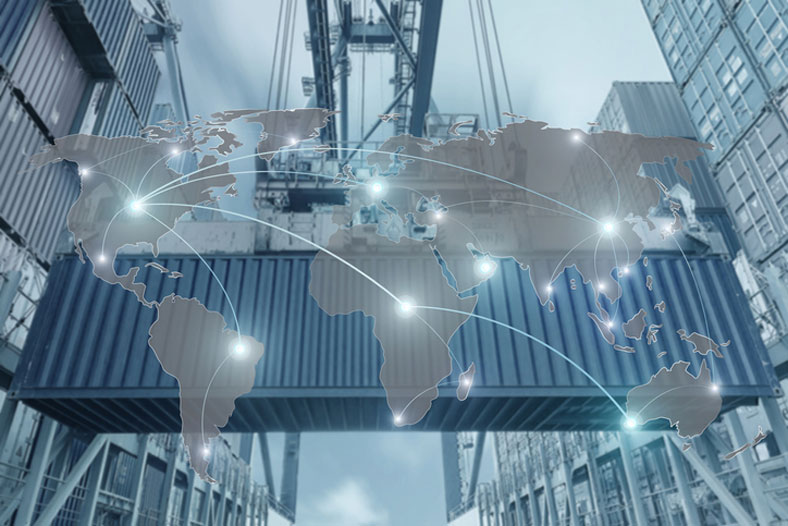Written by Rebecca Turley

What is the supply chain management process? A modern supply chain is a connected system of companies, resources, activities, and information that together bring finished goods and services to the consumer. The process can be broken down into the following basic components:

The supply chain management process in the planning stage of the supply chain involves coordinating all resources needed to produce or deliver a product or service. It involves forecasting and analyzing trends and employing specific metrics to determine the most efficient and effective way to move forward.
The planning stage is highly customized and tailored to a company’s specific needs and the market they serve. In this stage, systems are put in place to monitor inventory, cash flow, and forecasting/future demand.

Supply chain management professionals in the sourcing segment of the supply chain process oversee relationships with the suppliers who provide the raw and finished goods needed to create a product. Their oversight is needed to manage these relationships and ensure continued efficiency and cost controls.
Supply chain management professionals at this stage negotiate contracts with suppliers and ensure that procurement activities are well aligned with business objectives and market demands to minimize the risks that come with too much or too little material and components being fed into the manufacturing process. Modern manufacturing processes require pinpoint accuracy, and supply chain management professionals must ensure that suppliers are meeting specific metrics for quality, accuracy, and fulfillment rates.

The manufacturing segment of the supply chain includes not only product production and manufacturing but also testing for quality, packaging, shipping, and scheduling for delivery. Supply chain managers closely track the flow of the manufacturing process and keep a close eye on inventory to maintain optimal levels.

This final segment of the supply chain is focused on moving the finished product to partners and third parties like wholesalers and retailers or directly to the consumer. Decisions made at this point of the supply chain are vital to satisfying customer demand and keeping shelves stocked, and it’s up to supply chain management professionals to ensure products are delivered in the right quantity, to the right party, at the right time, all the while managing costs.
While the Supply Chain Process Remains the Same, Adapting to Changing Conditions is Often Necessary
Supply chain managers oversee the supply chain process to improve product quality, avoid inventory shortages or oversupply, reduce cost, and increase customer satisfaction. After all, a resilient and well-optimized supply chain helps ensure a company’s long-term financial health.
Automation, AI, and robotics are among the tools on hand to help today’s companies optimize inventory levels, minimize overhead costs, and avoid shortages and delays. Data logging and other software tools that provide real-time updates allow supply chain managers to view the supply chain in motion and circumvent snags. Today’s supply chain management software allows companies to coordinate and streamline logistics operations to pinpoint evolving problems before they become major issues.
Despite access to automation, forecasting tools, and real-time inventory systems, the modern supply chain is still vulnerable to disruption. Consumer needs and demand are always evolving, spurring the need to constantly revisit and refine supply chains at every level. Translation: a supply chain manager’s job is never done. They must always be on their toes and ready to revisit, refine, and adapt their strategies at any time.
While issues in the external supply chain are usually beyond the control of a company’s supply chain managers, they can make strategic decisions in response to shifts in domestic or global markets due to challenges that could include:
- Trade wars
- Environmental regulations
- Climate change/natural disasters
- Policy changes
- Civil unrest/wars
- Labor shortages
- Fluctuating costs associated with energy, raw materials, freight, and labor
For example, the Russian-Ukraine war has affected supply chains all over the world due to a lack of agricultural exports out of Ukraine and fertilizer exports out of Russia. A shortage of natural gas from the Nord Stream pipeline in Russia resulted in surging natural gas prices, while the United States has restricted key metal imports from Russia, thereby affecting some of our nation’s biggest sectors that rely on nickel to make batteries for everything from EVs to consumer electronics. The ripple effects from world events like this can be felt across the globe.
Successful supply chain managers understand how to redirect their efforts when domestic or global issues affect the movements or availability of goods and services.






